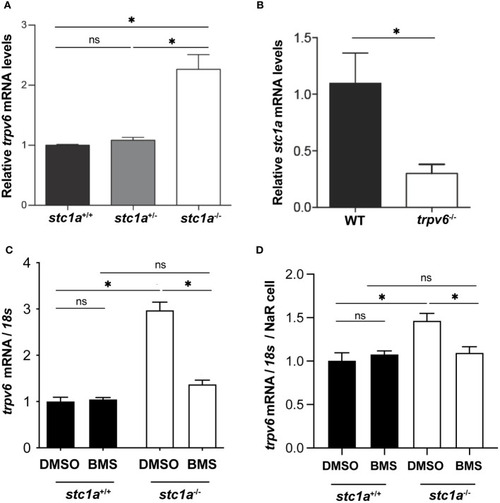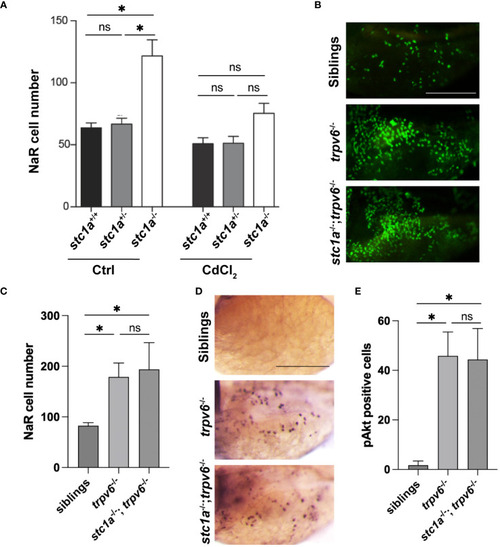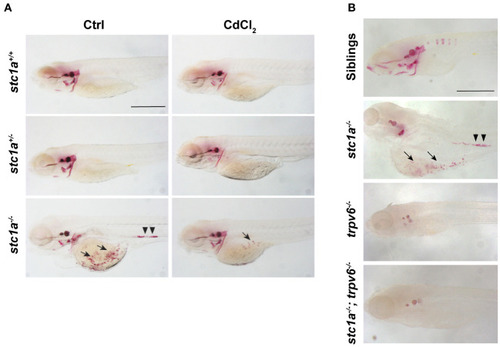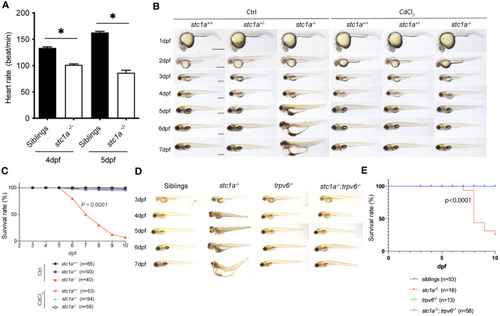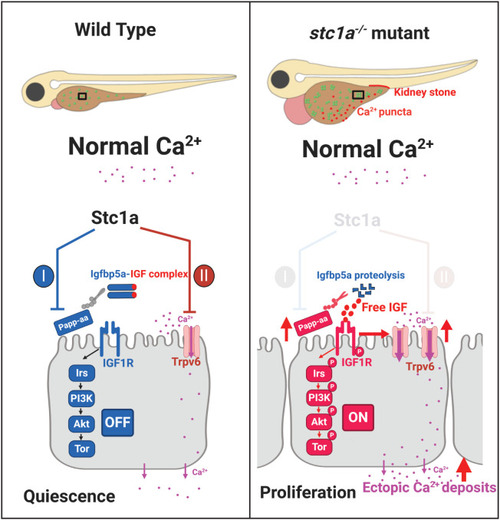- Title
-
Stanniocalcin 1a regulates organismal calcium balance and survival by suppressing Trpv6 expression and inhibiting IGF signaling in zebrafish
- Authors
- Li, S., Li, H., Wang, Z., Duan, C.
- Source
- Full text @ Front Endocrinol (Lausanne)
|
CS-derived Stc1a regulates the proliferation of NaR cells, but not other ionocyte types. EXPRESSION / LABELING:
|
|
Stc1a and Trpv6 regulate each other’s expression. |
|
Stc1a and Trpv6 suppress NaR cell proliferation via the same IGF signaling pathway. PHENOTYPE:
|
|
Loss of Stc1a results in abnormal calcium deposits in a Trpv6-depndent manner. |
|
Pharmacological inhibition and double deletion of Trpv6 rescues cardiac edema and body swelling, and delays premature death of |
|
A proposed model. Stc1a plays dual roles in ionocytes. Stc1a suppresses local IGF signaling and inhibits NaR cell proliferation by inhibiting Papp-aa-mediated Igfbp5a degradation. Stc1a also inhibits Trpv6 expression and activities. These two functions are linked. Trpv6-mediated calcium signaling inhibits IGF signaling, while IGF signaling upregulates Trpv6 expression. A loss of Stc1a reactivates IGF-PI3 kinase-Akt-Tor signaling in NaR cells and increased NaR cell proliferation. In addition, Trpv6 expression and Trpv6-mediated calcium uptake in each NaR cell are elevated in the |


